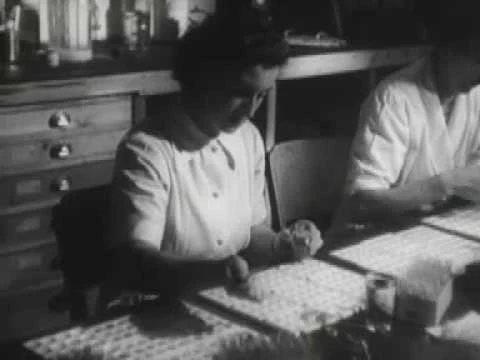Medical Refugees and the Modernisation of British Medicine, 1930–1960
https://www.ncbi.nlm.nih.gov/pmc/articles/PMC4496449/
Medical Texts (1858+) ..
""It was thus the threat of the Luftwaffe which compelled Britain — and London — to reorganise the hospital services. Many detailed and practical problems had to be sorted out and the
London Voluntary Hospitals Committee became increasingly anxious that while the Ministry’s scheme was all right as far as it went, few staff had been allocated to the task; they had inadequate authority and virtually no money. On 1 February 1939 the Ministry wrote to the committee suggesting that as soon as the boundaries of the sectors had been announced, the voluntary hospitals should agree amongst themselves to nominate a doctor to work out the details of the scheme. The Ministry would approve the nomination formally and pay this group officer £100 per year for his services. The committee thought that this went nowhere far enough and on 7 February wrote to the Permanent Secretary pointing out that a detailed and intricate organisation would be necessary, with group officers who would have to be capable men, able to take command in time of war.
The committee made a series of proposals which it wished to see laid before the Minister and, if necessary, the Cabinet. Adverse comments appeared in the press which Sir Charles Wilson disavowed. The Minister took a month to reply, and rejected the suggestion of failure to take the situation seriously. Nevertheless, senior members of the teaching hospitals’ staff were soon appointed as the first medical sector officers, and in June 1939 house governors and matrons were nominated as lay sector officers and matrons. Financial arrangements were also made for the establishment of first-aid posts and the sandbagging of the hospitals.3
The
Metropolitan Police District and the area within about forty miles of it was divided into
ten sectors. The general aim was to establish first-aid and casualty sorting centres in the danger areas, providing enough treatment to fit casualties for a journey by ambulance to advance base hospitals. These were in presumably safer areas, with enough staff and equipment for operative treatment of the injured. Base hospitals to which patients could be moved for after-care were still further from the centre. Finally there was a group of less well equipped hospitals for convalescent and chronic cases. The sector officers began the task of surveying the strange assortment of mental asylums, public assistance institutions and other hospitals which were at their disposal. They considered plans for the evacuation of staff and students.4 Contact was established with Sir Frederick Menzies and other medical officers of health, and a map was published in The Lancet showing the arrangement of the sectors and the position of the advance base hospitals.5
Nine sectors radiated from an apex in the centre of London into the home counties, and were based on one or more of the teaching hospitals; the Essex sector was based upon hospitals in Stratford, Ilford and Romford. At their extremities the sectors included parts of Essex, Hertfordshire, Buckinghamshire, Kent, Surrey and Berkshire which strictly belonged to other home defense regions — the regional organisational pattern established for military purposes.
http://www.nhshistory.net/ems_1939-1945.htm
St Bartholomew's and the Royal London School of Medicine and Dentistry
Between the Wars, students at The London needing to complete a First MB (in Biology, Chemistry and Physics) attended Queen Mary College for a year before proceeding to Second MB at The London.
Women students were first admitted to both colleges following World War II."
"Barts and The London School of Medicine and Dentistry (previously St Bartholomew's and the Royal London School of Medicine and Dentistry) was formed in 1995 by a merger of St Bartholomew's Hospital Medical College and the London Hospital Medical College with Queen Mary and Westfield College, now known as Queen Mary, University of London."
"England's first medical school
The Medical College at The London Hospital, England's first medical school, opened in 1785, pioneering a new kind of medical education providing teaching in theory as well as clinical skills.
A purpose-built lecture theatre was constructed at St Bartholomew's Hospital in 1791 and in 1822 the Governors approved the provision of medical education within the Hospital. Later a residential college was established, which moved to premises at Charterhouse Square in the 1930s. At The London, larger premises, still in use in the present School of Medicine and Dentistry, were built in Turner Street in 1854.
In 1900 both medical colleges became constituent colleges of the University of London in the Faculty of Medicine.
The Dental School opened at The London in 1911, acquiring the new Dental Institute and expanding student numbers during the 1960s. Dental education developed during the 1970s, increasing the collaboration between dentists and other professionals.
http://www.smd.qmul.ac.uk/about/history/



